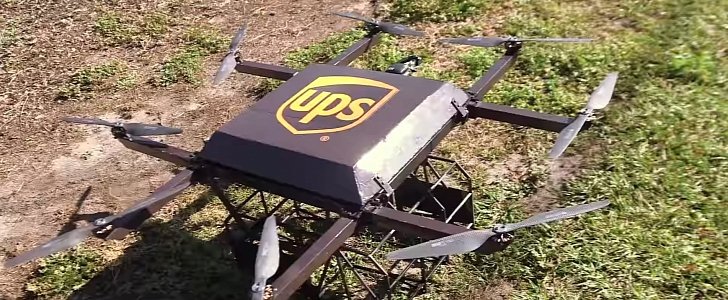Drone deliveries are going to happen, and we expect them to become something entirely boring some place in the world by the time most of us reach the legal retirement age.
Before you get used to the idea of delivery by drone, companies that are specialized in the field must develop systems to handle the complete technological and logistical nightmare that is behind this concept.
It all started with Amazon, when a future prospect for the e-commerce giant was announced by its CEO.
Other companies had to follow up on the idea, or they risked being left behind when the revolution of delivery drones came their way. Eastman Kodak, the company that was best known for work in the field of photography, developed (no pun intended) the world’s first digital camera in 1975.
Unfortunately for them, the company dropped the version for consumers out of fear of threatening its core business. UPS and Amazon both want to stay profitable, and the idea of delivery drones could be the equivalent of digital photography in the world of package logistics.
As TechCrunch notes, the first ever UPS drone delivery was done on a pre-programmed route, and the drone itself was created by a company named Workhorse Group, which is already a supplier for UPS.
It is cheaper for UPS not to create or build its drones in-house, and an outsourced solution is better for most corporations in cases like these. At the end of the day, the device must work, and it is the supplier’s job to handle that aspect.
UPS wants to employ drones to deliver small packages on streets where its trucks would not fit. Instead of having an employee waste time walking to an address with an envelope or small box in hand, a drone could do the transportation, while the driver monitors it.
Remote areas are the best places to use these drones, but they will also fit in where smaller packages must be taken within “line-of-sight” from the place where delivery vehicles can be parked.
Workhorse’s HorseFly octocopter (eight-rotor unmanned helicopter) can fly up to 30 minutes with a full charge, and it can reach 45 mph (72 km/h) with a package of up to 10 pounds (4.5 kg). The size and weight of the maximum capacity were chosen after studying the average boxes used for most deliveries.
Bigger packages will still be handled the old-fashioned way, so no jobs are at risk because of drones. Instead, jobs might be created, because someone has to take care of those octocopters.
It all started with Amazon, when a future prospect for the e-commerce giant was announced by its CEO.
Other companies had to follow up on the idea, or they risked being left behind when the revolution of delivery drones came their way. Eastman Kodak, the company that was best known for work in the field of photography, developed (no pun intended) the world’s first digital camera in 1975.
Unfortunately for them, the company dropped the version for consumers out of fear of threatening its core business. UPS and Amazon both want to stay profitable, and the idea of delivery drones could be the equivalent of digital photography in the world of package logistics.
As TechCrunch notes, the first ever UPS drone delivery was done on a pre-programmed route, and the drone itself was created by a company named Workhorse Group, which is already a supplier for UPS.
It is cheaper for UPS not to create or build its drones in-house, and an outsourced solution is better for most corporations in cases like these. At the end of the day, the device must work, and it is the supplier’s job to handle that aspect.
UPS wants to employ drones to deliver small packages on streets where its trucks would not fit. Instead of having an employee waste time walking to an address with an envelope or small box in hand, a drone could do the transportation, while the driver monitors it.
Remote areas are the best places to use these drones, but they will also fit in where smaller packages must be taken within “line-of-sight” from the place where delivery vehicles can be parked.
Workhorse’s HorseFly octocopter (eight-rotor unmanned helicopter) can fly up to 30 minutes with a full charge, and it can reach 45 mph (72 km/h) with a package of up to 10 pounds (4.5 kg). The size and weight of the maximum capacity were chosen after studying the average boxes used for most deliveries.
Bigger packages will still be handled the old-fashioned way, so no jobs are at risk because of drones. Instead, jobs might be created, because someone has to take care of those octocopters.













